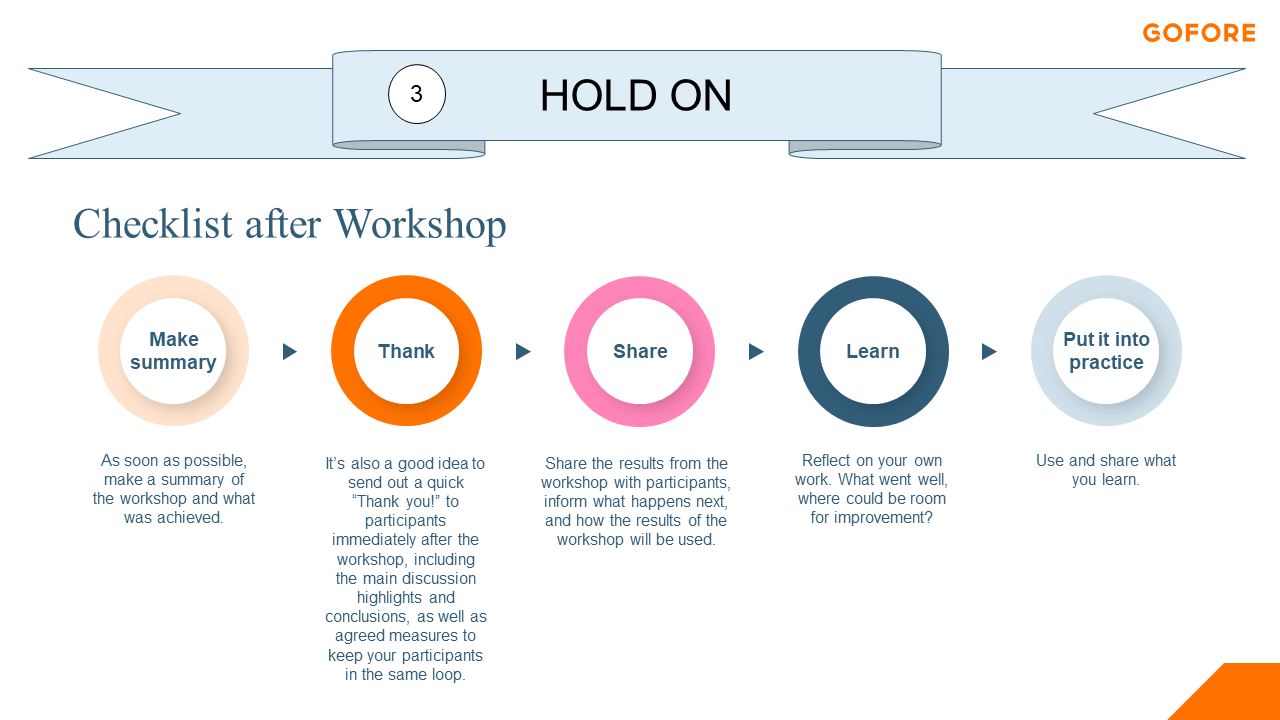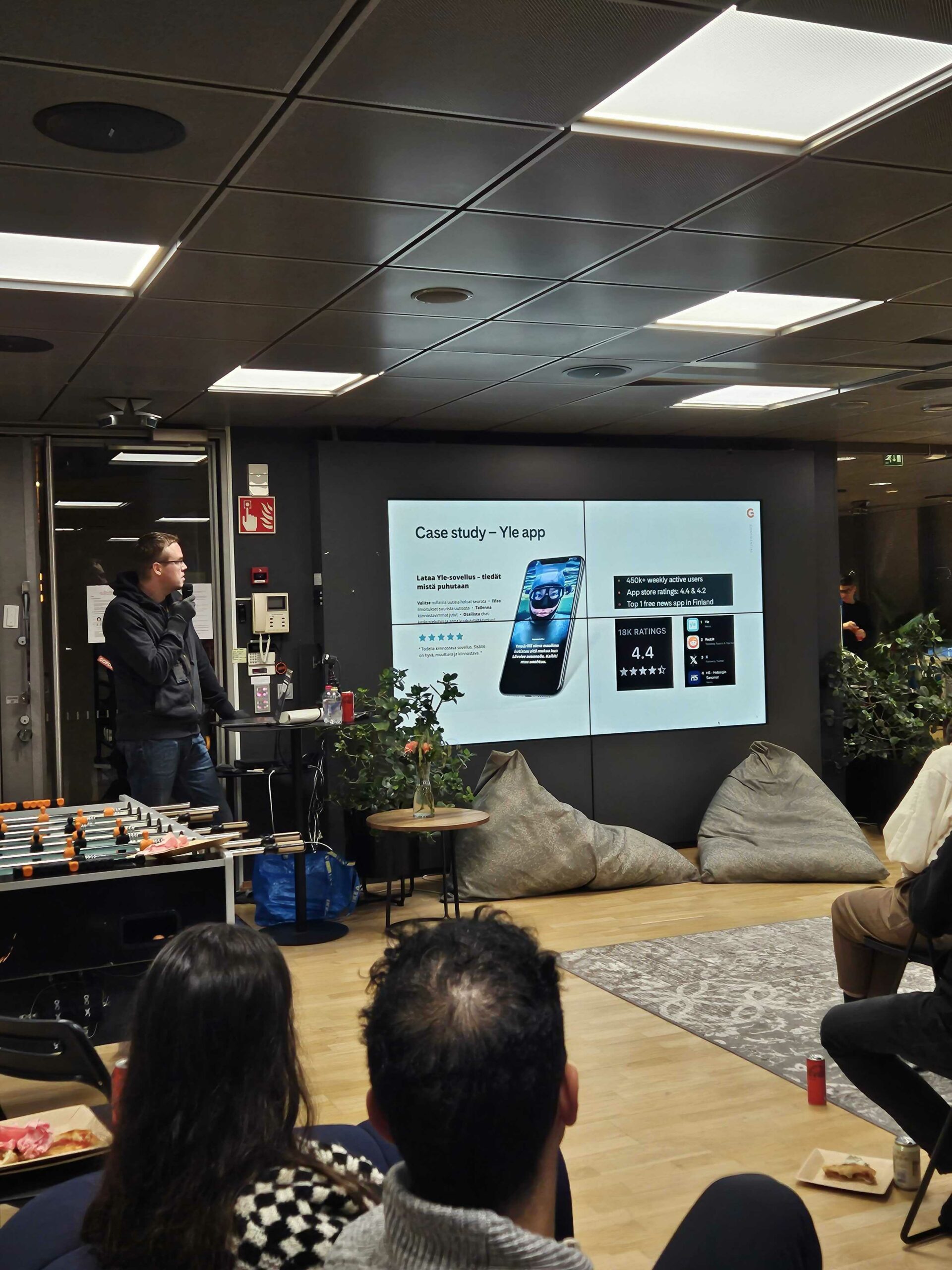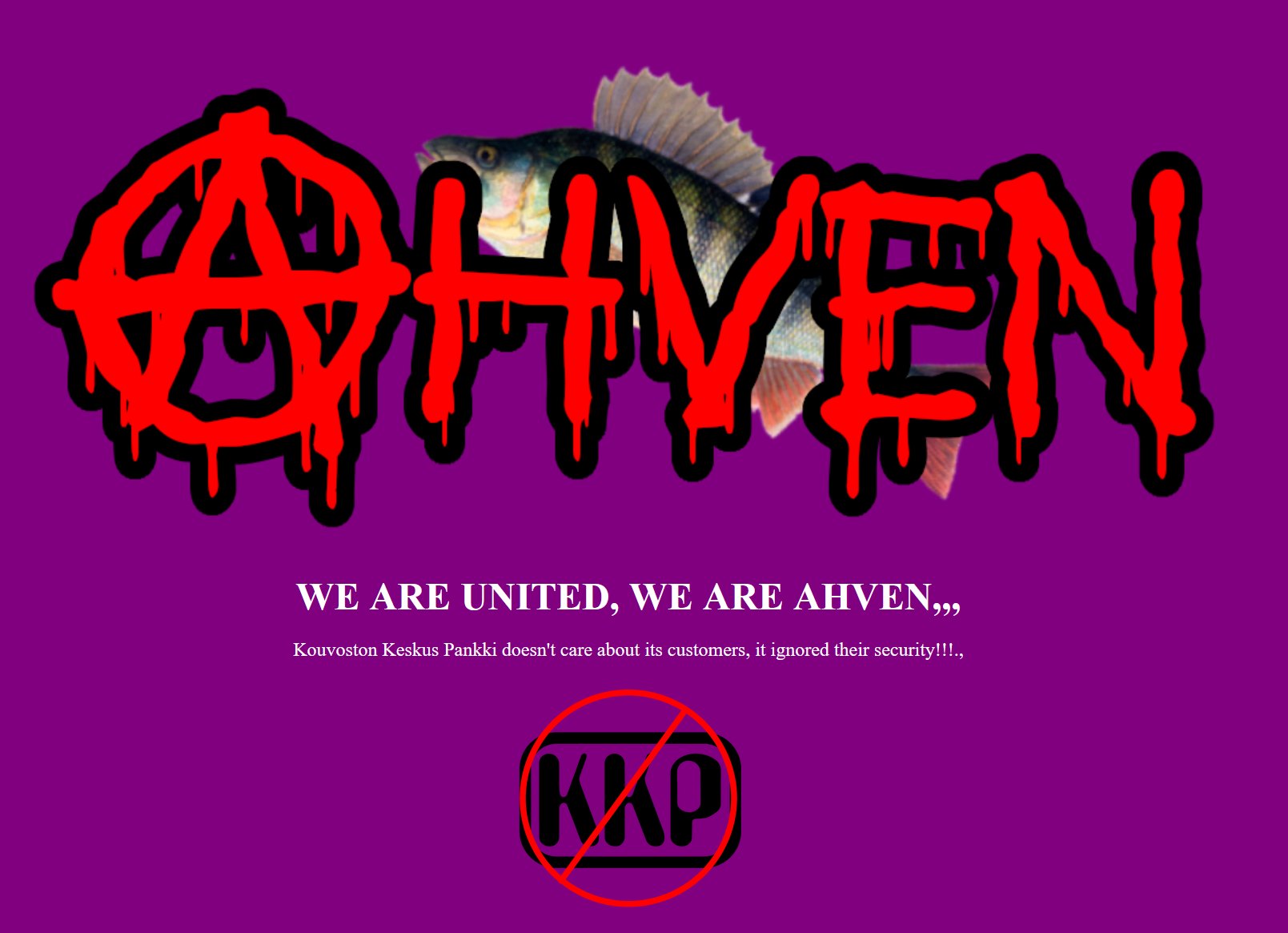After the workshop
In Part 1 Before the workshop and Part 2 During the workshop, we focused on preparations that should be made before your workshop and things that should be done during your workshop. In this final Part 3 of the blog series, we’ll advise you what you need to remember to do after your workshop.
These blog posts are a combination of what we learned from virtual meetings facilitation and our own findings when doing online workshops. Try out these tips and find your own way of doing virtual and online workshops.
Beyond
Remember that a workshop is often one part of a bigger whole – Workshop Day is an important event – getting the setup working, ensuring participants feel included and committed, ensuring discussions and assignments are productive – so naturally we spend a lot of time making sure it is done effectively. But it’s also good to remember that a workshop is part of a bigger picture. There will always be follow-up work to do afterwards to ensure the ideas and conclusions from the workshop actually do lead to some kind of practical use and progress.
Be an Early Bird on this too – After the workshop you will have a lot of material gained from participants. The best time to review this material is immediately after the event, while it is still fresh in your mind – ideally on same day. As soon as possible, make a summary of the workshop and what was achieved.
Don’t forget to say thank you – It’s also a good idea to send out a quick “Thank you!” to participants immediately after the workshop, including the main discussion highlights and conclusions, to keep your participants in the same loop.
Paint the big picture and communicate results – Share the results from the workshop with participants and inform what happens next and how the results of the workshop will be used. Instead of just distributing the material to participants, you can invite them to hear the summary and discuss it.

Summary session
Encourage involvement from everybody – End your work with an opportunity for everyone to reflect and share their own next steps, to create a sense of commitment and direction.
Start the summary session with check-in, warm-ups and the purpose and objective of meeting. Present the summary of the workshop. Have a small discussion session after presenting your summary and discuss the results together. You or your co-facilitator can make additions to the board, for example writing down ideas or questions. You can also take suggestions from participants about what they think should happen next, as they may have good ideas for how to keep the momentum going.
Including your participants in your workshop follow-up plans will make it more likely that they’ll stay involved and committed to the next steps and future topics.
TIP: Make a couple of open-ended questions that will encourage participants to add any further ideas they may have had after the workshop. Then prioritise the best ideas together.
Make agreements and action points visible – It’s easy for things to disappear into a black hole after a meeting. That’s why participants need to agree on the next steps and action points. Ensure all action points have one owner to ensure actions are remembered and completed. Concretise who, what and when.
TIP: The roadmap is a great tool for concretising measures. Depending on the topic of the workshop, it can be staggered over a shorter or longer period of time.
In the end – Ask about their feelings and impressions after the workshop. Inform what happens next and when and how the results and materials from the meeting will be shared.
Then, “Thank you very much, all participants!”
Finally
It is not always easy to remember things to do after a workshop. However, in order to put things and ideas into practice, the work is worth to doing.
This ends our three-part blog posting about how to plan and conduct virtual workshops and online group assignments successfully. We hope you can use our learnings in your own work. And remember, working together doesn’t always require being physically present in one place!



